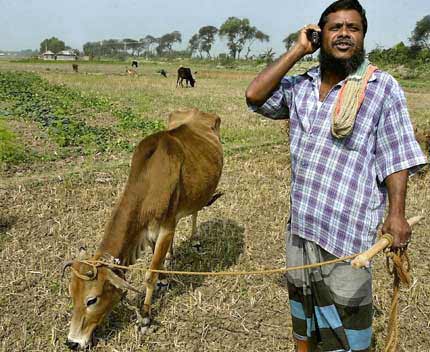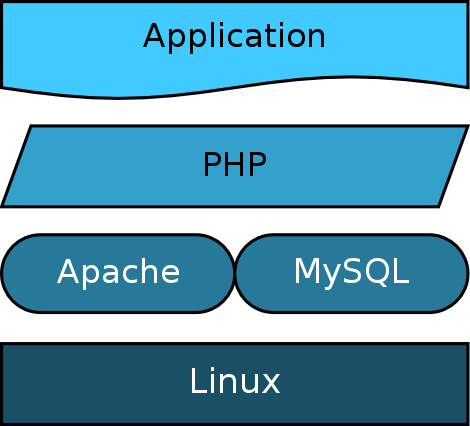Manmohan Singh returns after attempting to further Indo-Russian relationships.
The press quoted that the Prime Minister promised to have Kudankulam up and running in two-weeks to further Nuclear Cooperation and have work on Plants 3,4 started out there. However, most of the Scientific folk agree that it would take between 2 months and 4 months to actually start power generation in Kudankulam after the Fuel Rods are installed in the site. The political unrest out there is preventing any constructive work from progressing. There have been enough reports hinting that a foreign power has been stalling our progress. Yet we are unable to resolve it.
The Mullai-Periar Dam Row seems rather mute, once someone reads the facts about the structure's strength and stability. Despite all attempts, no one has been discussing about measures that should be taken, should the Dam fail. That possibility must always be considered, for we cannot always take these for granted when Human lives are at stake. Hence, procedures and measures for responding to large scale disasters have to be in place, not merely for this Dam, but for any other Dam in India.
A further hike in Fuel Prices in India has merely been postponed to appease the general public. However, this hike is inevitable and will have to happen either immediately at the beginning of the new year or just before the new year.
It is hypothesized that if India does not resolve the power crisis it is facing right now, it will soon enter the dark ages - an age without electricity, consequently lose the ability to consistently manufacture goods and provide services. This issue requires a huge solution. With the Opposition party, preventing the ruling party from being able to discharge any of its duties that would be beneficial to the civilian population. Hence Central Government Paralysis is a joint responsibility of the ruling party and the opposition party.
With a broken education system, India is churning out hundreds of thousands of graduates in technical, scientific and non-technical field. Very few of these people are capable of contributing dynamically toward the growth of Industry. This unemployability of graduates fuels the lack of growth in many sectors, results in wage-inflation and also furthers unemployment with too little or no advantages for society which is investing heavily in education.
Indians, having lived as natives for several millennia are probably one of the few natives who have the luxury of living in their own land as free people with so much cultural diversity. Unfortunately, this social advantage translates to a disadvantage due internal barriers of language. The high population results in people developing a 'scarcity' mentality forcing the to exhibit lack-of-confidence, mistrust and results in heavy politicking with trust getting breached too frequently. This social problem is so deeply entrenched that addressing it would require a revolution in education at the very minimum.
Research in India does happen in a few segments, and is useful for the people of the world. However, this research is limited in comparison to the population and bears fruit too late and sometimes is not beneficial.
When the Indian Republic was first formed, the principle of 'Socialism' was absorbed, forcing all essential services as Public Sector Units (PSUs). Despite the availability of high quality administrators, technical labor and blue-collar labor, the PSUs have often been criticized of performing below expectations creating heavy deficits eating into the budget and therefore the tax-payers money.
Corruption easily exists within the political system as implementing a system to circumvent or prevent corruption has been proven to be too difficult, particularly when everyone in the system is involved. Further, problems like corruption include involvement of the citizens of the nation also - however, they are unable to remove a deeply entrenched system that has broken the bureaucracy which was made strong by the original British Civil Services.
Crime continues to increase at an uncontrolled rate in several cities which are critical to India's Export-Oriented-Units. However lack of enforcement interlinked with entrenched corruption aids in increasing crime levels - which are very high in cities like Bangalore, Delhi, Noida, Gurgaon demonstrating fewer and fewer sites to setup computers.
The relevant question to ask now, therefore, is what can each of us individually or as teams do about these undecided issues. The future is definitely in our hands, with so many issues to tackle before India can become a superpower in 2020.
The press quoted that the Prime Minister promised to have Kudankulam up and running in two-weeks to further Nuclear Cooperation and have work on Plants 3,4 started out there. However, most of the Scientific folk agree that it would take between 2 months and 4 months to actually start power generation in Kudankulam after the Fuel Rods are installed in the site. The political unrest out there is preventing any constructive work from progressing. There have been enough reports hinting that a foreign power has been stalling our progress. Yet we are unable to resolve it.
The Mullai-Periar Dam Row seems rather mute, once someone reads the facts about the structure's strength and stability. Despite all attempts, no one has been discussing about measures that should be taken, should the Dam fail. That possibility must always be considered, for we cannot always take these for granted when Human lives are at stake. Hence, procedures and measures for responding to large scale disasters have to be in place, not merely for this Dam, but for any other Dam in India.
A further hike in Fuel Prices in India has merely been postponed to appease the general public. However, this hike is inevitable and will have to happen either immediately at the beginning of the new year or just before the new year.
It is hypothesized that if India does not resolve the power crisis it is facing right now, it will soon enter the dark ages - an age without electricity, consequently lose the ability to consistently manufacture goods and provide services. This issue requires a huge solution. With the Opposition party, preventing the ruling party from being able to discharge any of its duties that would be beneficial to the civilian population. Hence Central Government Paralysis is a joint responsibility of the ruling party and the opposition party.
With a broken education system, India is churning out hundreds of thousands of graduates in technical, scientific and non-technical field. Very few of these people are capable of contributing dynamically toward the growth of Industry. This unemployability of graduates fuels the lack of growth in many sectors, results in wage-inflation and also furthers unemployment with too little or no advantages for society which is investing heavily in education.
Indians, having lived as natives for several millennia are probably one of the few natives who have the luxury of living in their own land as free people with so much cultural diversity. Unfortunately, this social advantage translates to a disadvantage due internal barriers of language. The high population results in people developing a 'scarcity' mentality forcing the to exhibit lack-of-confidence, mistrust and results in heavy politicking with trust getting breached too frequently. This social problem is so deeply entrenched that addressing it would require a revolution in education at the very minimum.
Research in India does happen in a few segments, and is useful for the people of the world. However, this research is limited in comparison to the population and bears fruit too late and sometimes is not beneficial.
When the Indian Republic was first formed, the principle of 'Socialism' was absorbed, forcing all essential services as Public Sector Units (PSUs). Despite the availability of high quality administrators, technical labor and blue-collar labor, the PSUs have often been criticized of performing below expectations creating heavy deficits eating into the budget and therefore the tax-payers money.
Corruption easily exists within the political system as implementing a system to circumvent or prevent corruption has been proven to be too difficult, particularly when everyone in the system is involved. Further, problems like corruption include involvement of the citizens of the nation also - however, they are unable to remove a deeply entrenched system that has broken the bureaucracy which was made strong by the original British Civil Services.
Crime continues to increase at an uncontrolled rate in several cities which are critical to India's Export-Oriented-Units. However lack of enforcement interlinked with entrenched corruption aids in increasing crime levels - which are very high in cities like Bangalore, Delhi, Noida, Gurgaon demonstrating fewer and fewer sites to setup computers.
The relevant question to ask now, therefore, is what can each of us individually or as teams do about these undecided issues. The future is definitely in our hands, with so many issues to tackle before India can become a superpower in 2020.


















